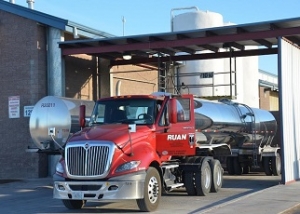Dairy in the World
Safety Tools for Every Dairy

“Your people are your most viable asset,” said Chris St. Pierre, Safety & Compliance Facilitator, St. Pierre Emergency Preparedness, LLC, Two Rivers, Wis. “Implementing and maintaining a safety plan at your dairy keeps everybody safer.”
St. Pierre shared a comprehensive list of safety equipment and strategies for dairies at the 2022 Annual Conference of the Professional Dairy Producers of Wisconsin, including:
-
Safety Data Sheets – These “SDS” sheets are required for every chemical on the farm. Compile them together in a bright yellow binder, then label and store it in a location of which every employee is aware. Train all workers on SDS’s and have a hazard communication program in place.
-
Lockout/Tagout/Verification (LOTOV) - Implement and provide routine training regarding LOTOV. This type of training should be provided for employees at the time of hire and annually thereafter to maintain competence and to keep apprised of any changes or updates.
-
First aid (FA) kits – Multiple FA kits can be located in clean locations throughout the farm. Contents should include a variety of FA items such as bandages of assorted sizes, wraps, tourniquets, protective gloves, and ice packs to name a few.
-
Trauma kit – Tools to control heavy bleeding may be included with the FA kits. Consider placing in a bright-colored case or protective bag. The kits can include several tourniquets, heavy compression bandages, chest seals, protective gloves, and clean towels.
-
Fire extinguishers – Different fire extinguishers are compatible with specific types of fires. Class A extinguishers put out fires fueled by ordinary combustibles like paper or wood. Class B units are intended for flammable liquids. Class C extinguishers are for electrical fires (be certain to disconnect electrical power). Have the right type of extinguisher in the right place based on the associated hazard. Example: generally, you would have a Type ABC extinguisher in the milking parlor although, determining the exact type of fire extinguisher for your application should be done by performing a site-specific hazard assessment.
-
Fire department (FD) relations – Work cooperatively with your local fire department and emergency medical services provider so they are familiar with your property. Consider hosting a fire- department-coordinated training at your dairy. Your local FD may perform training simulations and proactively learn about your business, workers, animals, and equipment. The department also may provide you with valuable information to enhance your dairy farm safety.
-
Vehicle ID sheets – Every vehicle owned by your business should contain an informational sheet listing 911; other emergency contacts, Poison Control; the owner’s name and address; and the farm’s main phone number. This vital information is often difficult for people to recall or locate in the event of an emergency.
-
Automated external defibrillator (AED) – AED’s have become more cost effective over the past few years, and a farm can acquire one of these simple-to-use, lifesaving tools. Many AED grants and grant funding is available to assist with the purchase of an AED. St. Pierre suggested storing it in the vicinity of your emergency trauma kits and per the manufacturer’s recommendations.
-
Personal protective equipment (PPE) – Safety goggles, respiratory protection, hearing protection, hi-visibility vests and clothing, gloves, and suitable protective footwear are all important for individual worker safety. Some of these items can be built into an employee rewards incentive program, such as providing dairy-insignia apparel in hi-vis colors. Be sure to remove strings on hoodies – and encourage workers to do the same on their other clothing – as these strings and other loose clothing can be hazards when working around power take-off units and other heavy equipment.
“Implement a safety training program to protect you and your workers and enhance workplace safety,” St. Pierre advised. “Base your core safety values on communication, training and accountability to provide an enhanced safety culture.
“There is significant liability in not providing safety equipment and proper training,” he cautioned. “But on the flip side, prioritizing a safety program both proves that you care about safety, and shows your employees that you care about them.”






















